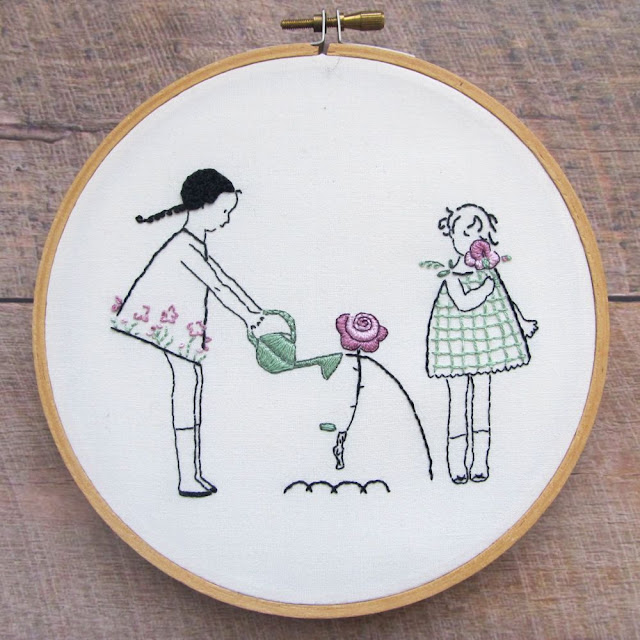Linda asked a great question in the comment section of my last post: Was I going to use the cotton fabric I showed in my kits because it seemed that I felt washing it had negative results in the fabric texture - that didn't sound promising. Excellent question.
Let me explain what happened and what further tests I've done.
I used embroidery cotton. Not traditional even weave or Aida, but a traditional homespun with an even weave similar to linen and used for embroidery and other sewing.
All cotton fibers relax when washed. I used the term "pilling" which I edited out because this is not a very good term for this softening of the fibers.
Generally, most crafters pre-wash fabrics before sewing or stitching. This is not the case with embroidery fabrics and linens. They are usually pre-washed by the manufacturer (more about how below).
Because this fabric is used for more than embroidery, I tried to wash it ONLY because I wanted to test the printer on washed and unwashed fabric to see if it affected printing quality.
I washed the fabric in a standard (really old) home washing machine which agitates much more than hand washing or commercial pre-washing of fabric bolts before sale. This caused more softening and relaxing of the fibers than I would have liked.
THAT is the result I didn't like.
I printed that piece (right after washing and ironing it dry) and another "unwashed" piece and preferred the unwashed piece as it seemed more crisp looking.
Now, here's the catch: turns out, according to the fabric shop owner, that fabric is already pre-washed cotton fabric. But commercial washing doesn't crumple and agitate like home machine washing which is why the fibers were more relaxed (after home machine washing) than I would have liked for hand embroidery.
But wait! There's more! I decided to make sure I was selling the right embroidery fabric base for these projects and I hand washed another piece of the same fabric and it turned out great. AND the ink does not run. And I am thrilled with the fabric and the process.
Bottom line?
The fabric I am buying to sell in kits is pre-washed by the manufacturer. It is a homespun cotton with an even weave like linen and used for hand embroidery. It can be hand washed prior to or after stitching with excellent results. Hand embroidered designs should always be spot cleaned or gently hand washed.
How to wash hand embroidered items:
Most stitched household items, such as pillowcases and aprons, are washed by hand or on a delicate cycle to protect the stitching. This does not cause as much relaxation in fibers as there is little to no agitation.
Hand embroidered pieces for display are generally simply held taut under running cold water, and hung to dry. If there are stains, they can be spot cleaned. After drying the piece is stretched into a hoop or frame.
Here is a piece I worked up on a piece of very tight weave Cannon bedsheet at least as old as the 1970s. After years, the fibers relax and you can see they form a slight soft layer. This is the relaxation I am talking about.It gives it a bit of a natural look you'll see in natural calico (US muslin).
So, thank you SO much for that question. Linda. I think I was a bit misleading about the result of washing this embroidery cotton by using the word pilling.
This is the new piece I hand washed after printing. I even scrunched it up good and scrubbed at it a bit - ALL things I WOULD NOT do after stitching. I did not iron it very well. LOL The ink does not run and the fabric has softened as expected but it's not ruined by any means.
Thanks for asking!



















